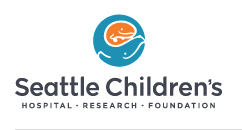Intraarticular Corticosteroid Therapy in Perthes Disease.
| Status: | Terminated |
|---|---|
| Conditions: | Orthopedic |
| Therapuetic Areas: | Orthopedics / Podiatry |
| Healthy: | No |
| Age Range: | 4 - 13 |
| Updated: | 4/21/2016 |
| Start Date: | March 2009 |
| End Date: | January 2014 |
Intraarticular Corticosteroid Therapy in Legg-Calve Perthes Disease: a Randomized Controlled Clinical Trial.
Legg-Calve-Perthes disease (LCP) represents the loss of blood flow to the head of the femur,
resulting in significant hip pain and potential long term disability. This study represents
a single center, randomized, prospective, controlled study comparing the treatment of LCP
with an intraarticular corticosteroid (triamcinolone hexacetonide) injection with
traditional nonoperative treatment.
resulting in significant hip pain and potential long term disability. This study represents
a single center, randomized, prospective, controlled study comparing the treatment of LCP
with an intraarticular corticosteroid (triamcinolone hexacetonide) injection with
traditional nonoperative treatment.
Legg-Calve-Perthes disease (LCP) represents the loss of blood flow to the head of the femur,
resulting in significant hip pain and potential long term disability. The cause of LCP is
still unknown, but tends to occur predominantly in boys from ages 4-12. For the majority of
those affected, observation and symptomatic treatment with oral antiinflammatories, such as
ibuprofen, is indicated. This study represents a single center, randomized, prospective,
controlled study comparing the treatment of LCP with an intraarticular corticosteroid
(triamcinolone hexacetonide) injection with traditional nonoperative treatment. The
investigators will test for improved outcomes by measuring functional outcomes (PODCI and
ASKp questionnaires, StepWatch activity monitor), hip range of motion and visual-analog pain
scales. The investigators hypothesize that injections of corticosteroids (potent, injectable
antiinflammatories) will result in improved overall function through decreased pain and
increased hip range of motion in this patient population.Additional biological research will
be performed. There is no human information on the inflammatory response that occurs in the
hip joint of children with Perthes disease, and there are no true animal models of Perthes
disease. To better understand the pathobiology of Perthes disease, the collection of joint
fluid from both hips may provide insight into the treatment of a disease for which we
currently have no explanation of cause, and consequently no therapies
resulting in significant hip pain and potential long term disability. The cause of LCP is
still unknown, but tends to occur predominantly in boys from ages 4-12. For the majority of
those affected, observation and symptomatic treatment with oral antiinflammatories, such as
ibuprofen, is indicated. This study represents a single center, randomized, prospective,
controlled study comparing the treatment of LCP with an intraarticular corticosteroid
(triamcinolone hexacetonide) injection with traditional nonoperative treatment. The
investigators will test for improved outcomes by measuring functional outcomes (PODCI and
ASKp questionnaires, StepWatch activity monitor), hip range of motion and visual-analog pain
scales. The investigators hypothesize that injections of corticosteroids (potent, injectable
antiinflammatories) will result in improved overall function through decreased pain and
increased hip range of motion in this patient population.Additional biological research will
be performed. There is no human information on the inflammatory response that occurs in the
hip joint of children with Perthes disease, and there are no true animal models of Perthes
disease. To better understand the pathobiology of Perthes disease, the collection of joint
fluid from both hips may provide insight into the treatment of a disease for which we
currently have no explanation of cause, and consequently no therapies
Inclusion Criteria:
- age of 4 to 12 years
- diagnosed with Idiopathic osteonecrosis of the femoral head
- symptoms less than 12 months old.
Exclusion Criteria:
- Symptoms for more than 12 months
- Previous treatment other than anti-inflammatories, crutches or bed rest
- Subjects more than 8 years old or have a hand bone age greater than 6 years old and
lateral pillar B or B/C disease.
- Bilateral hip disease
- Personal or family history of problems with general anesthesia
- Prior steroid treatment
- Previous diagnosis of:
- Asthma
- Identifiable rheumatologic condition
- Metabolic Diseases (including but not limited to Gaucher's disease or congenital
hypothyroidism)
- Sickle cell disease
- Known pain syndrome
- Hip sepsis
- Prior malignancy (solid organ or bone marrow transplant)
- Blood Clotting disorder
We found this trial at
1
site
Seattle Children's Hospital Seattle Children’s Hospital specializes in meeting the unique physical, emotional and developmental...
Click here to add this to my saved trials
